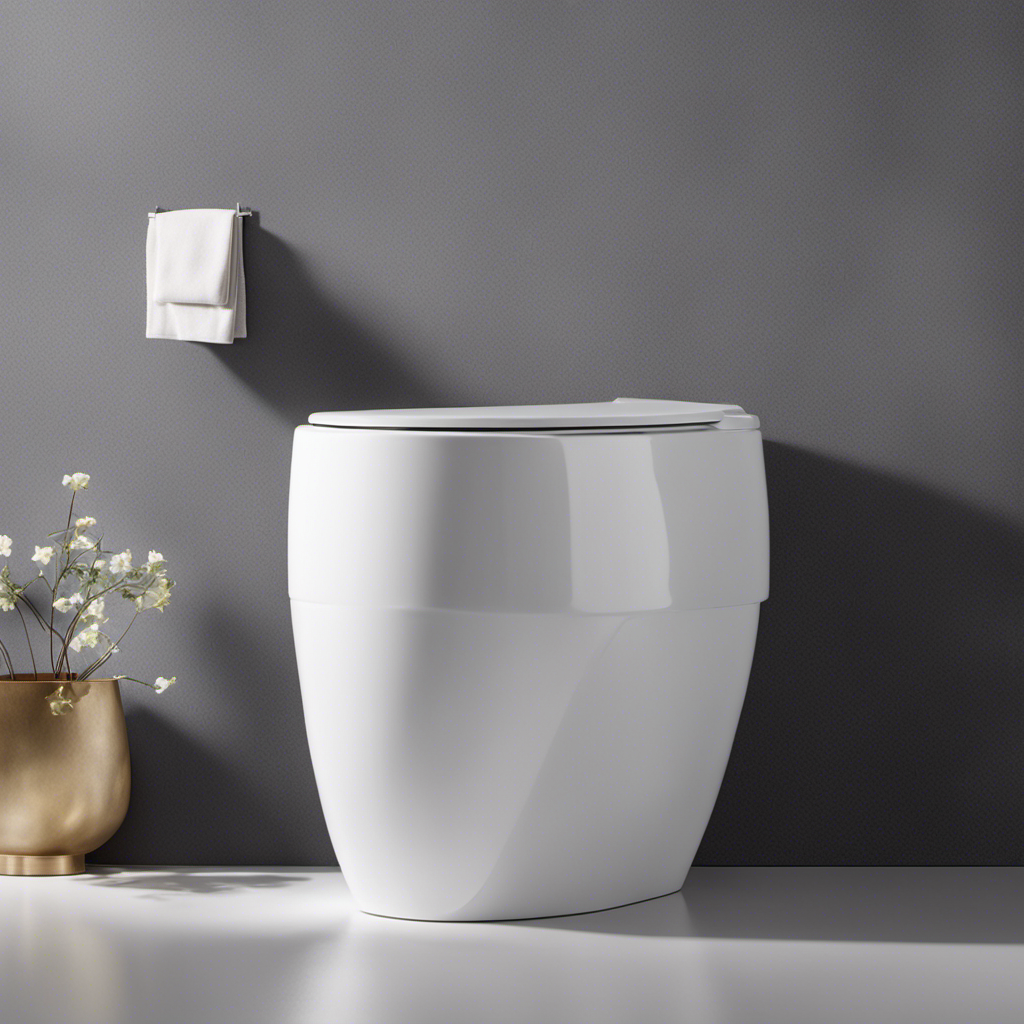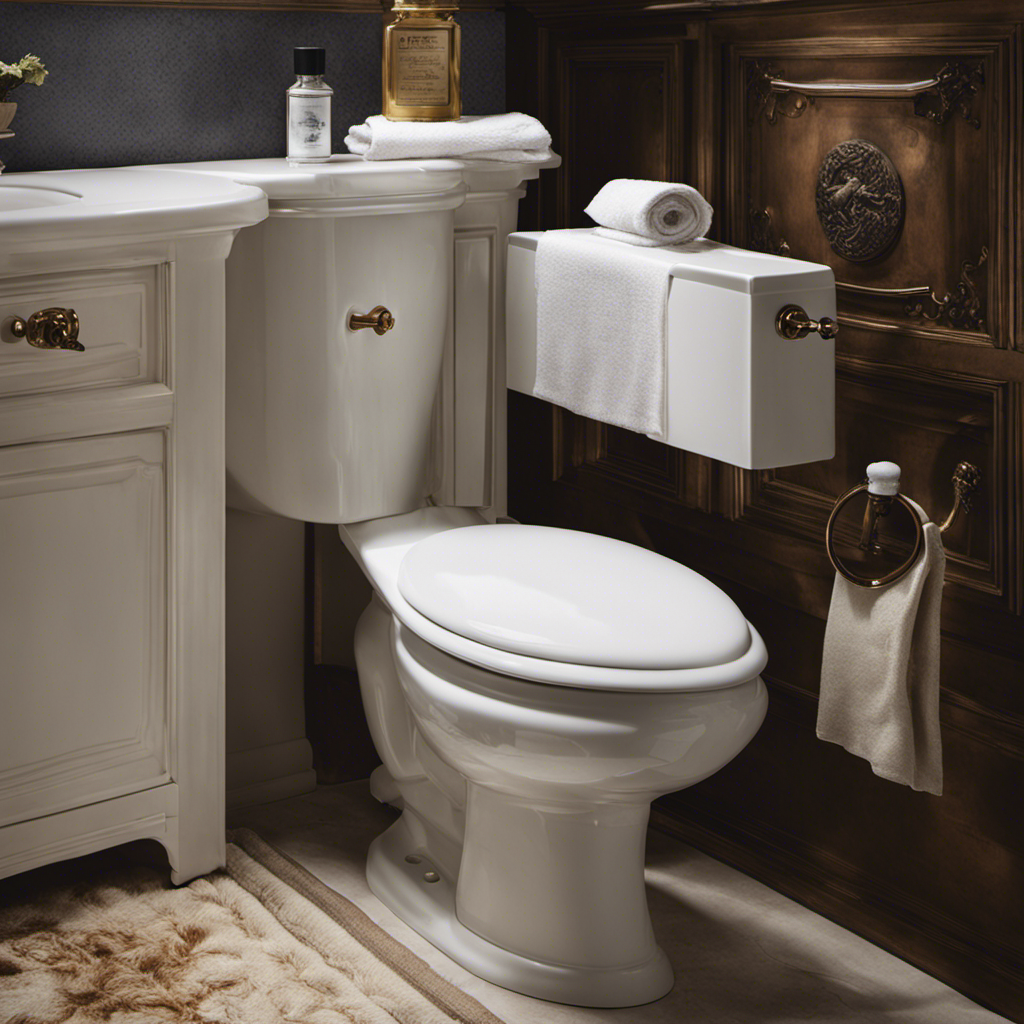I’ve been there – you’re trying to relax after a long day, but all you can hear is the incessant sound of a running toilet. It’s not just annoying, it’s wasteful too.
But fear not, because I’ve got the solution for you. In this step-by-step guide, I’ll show you exactly how to make the toilet stop running. From identifying the problem to checking the flapper and adjusting the float, we’ll cover it all.
Say goodbye to that constant noise and hello to a peaceful bathroom. Let’s get started!
Key Takeaways
- Checking the flapper valve, fill valve, and float for wear, misalignment, or blockages is essential in identifying the problem with a running toilet.
- Adjusting the flapper by inspecting it for cracks or damage, adjusting the chain length, and ensuring proper seating can help resolve the issue.
- The float should be checked for proper positioning, water level adjustment, and any damage to the float arm. Cleaning the float mechanism is also important.
- If cleaning the fill valve doesn’t solve the problem, replacing it may be necessary. This involves shutting off the water supply, draining the tank, and installing a new fill valve.
Identifying the Problem
To figure out why the toilet won’t stop running, you’ll need to identify the problem. Troubleshooting techniques can help you pinpoint the issue and resolve it quickly. Here are some common toilet problems to look out for:
-
Check the flapper valve: The flapper valve is responsible for controlling the water flow from the tank to the bowl. If it’s worn out or damaged, it can cause the toilet to keep running. Inspect the flapper valve for any signs of wear or misalignment.
-
Examine the fill valve: The fill valve regulates the water level in the tank. If it’s not functioning properly, it can lead to continuous water flow. Ensure that the fill valve is clean and free from any blockages.
-
Inspect the float: The float helps in regulating the water level in the tank. If it’s stuck or damaged, it can cause the toilet to run. Check if the float is properly positioned and moves freely.
Checking the Flapper
Check if the flapper is properly seated and not causing the toilet to continue running.
Start by lifting the toilet tank lid and locating the flapper. It is a rubber or plastic piece that covers the flush valve.
Inspect the flapper for any cracks or damage. If it is damaged, it needs to be replaced.
Next, check the chain that connects the flapper to the flush handle. If the chain is too loose or too tight, it can prevent the flapper from sealing properly. Adjust the chain length as needed.
Additionally, inspect the water level in the tank. It should be about an inch below the top of the overflow tube. If it is too high, adjust the water level by adjusting the float.
Adjusting the Float
Start by locating the float in the toilet tank and ensure it is properly adjusted. Adjusting the float can help resolve issues with a running toilet.
Here are some float adjustment techniques to consider:
-
Check the water level: If the float is set too high, it can cause the toilet to constantly run. Lower the float to reduce the water level in the tank.
-
Inspect the float arm: Ensure that the float arm is not bent or damaged. A bent arm can prevent the float from properly controlling the water level. Straighten or replace the arm if necessary.
-
Clean the float mechanism: Accumulated debris can interfere with the float’s movement. Clean the float and the surrounding area to ensure smooth operation.
-
Replace faulty parts: If the float is damaged or worn out, it may not function properly. Consider replacing the float or other faulty components to resolve the issue.
Cleaning the Fill Valve
Cleaning the fill valve can help resolve issues with a constantly running toilet by ensuring proper water flow. Troubleshooting common toilet issues is important to maintain the functionality of your bathroom fixtures.
Regular toilet maintenance is crucial to avoid costly repairs and water wastage. Here is a step-by-step guide on how to clean the fill valve and get your toilet back to its normal operation.
- Turn off the water supply to the toilet by shutting off the valve located behind the toilet.
- Flush the toilet to drain the tank completely.
- Locate the fill valve, which is usually a vertical tube connected to the float.
- Remove the top cap or cover of the fill valve.
- Use a small brush or toothbrush to scrub away any debris or mineral buildup inside the valve.
- Rinse the valve thoroughly with clean water.
- Reassemble the fill valve and turn on the water supply.
- Test the toilet by flushing and checking for any leaks.
By following these steps, you can effectively clean the fill valve and resolve common toilet issues, ensuring proper water flow and the efficient operation of your toilet.
Regular maintenance will help prolong the lifespan of your toilet and save you from unnecessary repairs.
Replacing the Fill Valve
To resolve issues with a constantly running toilet, it’s time to replace the fill valve. Here are the steps to follow:
-
Shut off the water supply: Locate the shut-off valve near the base of the toilet and turn it clockwise to stop the water flow.
-
Drain the tank: Flush the toilet to remove as much water as possible. Use a sponge or towel to soak up any remaining water in the tank.
-
Remove the old fill valve: Disconnect the water supply line from the bottom of the tank. Unscrew the nut underneath the tank that secures the fill valve in place. Lift the old fill valve out of the tank.
-
Install the new fill valve: Insert the new fill valve into the tank and secure it with the nut. Reconnect the water supply line. Turn on the water supply and check for any leaks.
Conclusion
So there you have it, a step-by-step guide on how to stop your toilet from running. By following these instructions, you can easily identify and fix the problem yourself, saving both time and money.
However, some may argue that calling a professional plumber is the best solution. While that may be true in some cases, it’s important to remember that not all toilet running issues require professional help. With a little knowledge and some simple adjustments, you can be your own plumber and solve the problem with ease.










